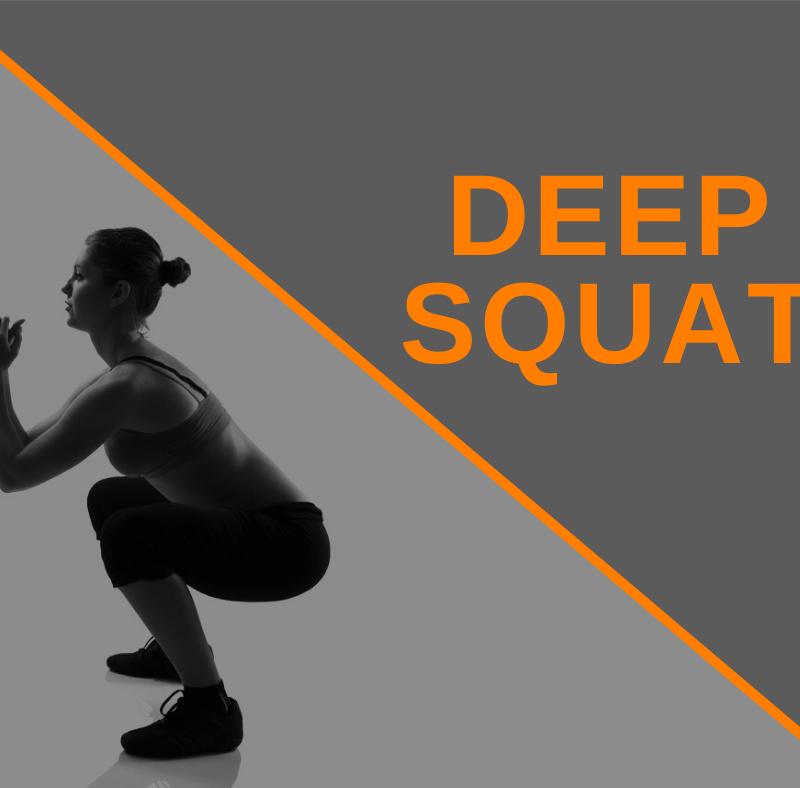
A seated position, that familiar 90-degree angles in which we spend hours –driving, doing computer work, watching television –places undue stress on lower body muscles. The deep squat, an old-school resting position, (aka, ass-to-grass) is a flat-footed squat that today has become somewhat neglected, but can easily make its way into daily posturing while improving hip, knee, and ankle mobility.
Strike a Deep Squat Pose
The full flat-footed or deep squat refers to a position of extreme knee flexion, where the back of the thighs rest against the calves while also keeping heels flat on the floor. While we typically see toddlers ease into such a stance and remain there to play, we tend to abandon this posturing as we grow into adulthood. Perhaps the need simply disappeared with the advent of comfortable, modern furniture.
It seems as though every week a new research study presents data indicating the long-term hazards associated with prolonged periods of “chair time”. As the glute muscles deteriorate, hip flexors tighten from lack of use, and inactive abdominals weaken, we ought not wonder at the preponderance of back problems seen by medical professionals. Yet, we also know that our foraging forefathers, who spent extended periods of time resting after hunting, did not experience such postural challenges.
Incorrect Evolution of Inactivity
To better understand the evolution of sedentary behaviors, David Raichlen and his fellow scientists at the University of Southern California studied inactivity in a group of Tanzanian hunter-gatherers, the Hadza. The Hadza have a lifestyle that bears a striking resemblance to how our early hunter/gatherer ancestors humans lived. The premise of this research focused on understanding and tapping into an evolutionary context to improve health and well-being today.
For the study, Hadza participants wore devices that measured periods of active movement and periods of rest. While this working tribe demonstrated relatively high levels of physical activity, sometimes tripling what federal guidelines suggest to us today, the devices also noted high levels of inactivity, up to 10 hours each day.
This parallels the sedentary hours reported by humans today. Yet the Hadza have seemingly escaped many of the health problems that plague modern society. What keeps the Hazda so healthy? The simple answer points to resting body position. Their flat-footed squat position, the favored posturing of the tribe when at rest, made a seamless transition from childhood into adulthood. Remaining for any length of time in a flat-footed squatting position actually promotes higher levels of muscle activity than which occurs when we spend an equivalent amount of time in a chair or on the couch.
Positional Protection
Thus, the issue of inactivity alone may not yield sufficient answers; perhaps it comes down to the manner in which the inactivity occurs. Some physiological processes that highlight health challenges related to extended sedentary behavior include a reduction in the enzymes that mobilize fat cells for use as energy.
This leads to elevated biomarkers for heart disease, such as triglycerides and even cholesterol. Despite the extended periods of “rest” exhibited by our ancestors, squatting while tending the fire for meals or communing with fellow hunters at day’s end, their greater expenditure of energy in such a position conferred a protective measure against our modern-day cardiovascular disease.
Coaching the Deep Squat with Confidence
The deep squat can successfully screen for and identify potential functional deficits, thereby enabling a personal trainer to better customize clients’ workouts. In addition to increasing muscle activation, some research indicates that deep squats incorporated into a strict training regimen may improve athletic functional performance. One study determined that gluteal muscle fibers fire more in proportion to the depth of the squat.
The National Strength and Conditioning Association posits that squats of this sort do not incite damage to knee jointstability when executed with proper form, and furthermore may serve to strengthen connective tissue.
The Skeptics Speak
In spite of these advantages, however, some degree of patellofemoral injury does appear linked to deep knee flexion. Over time, this condition may predispose individuals to detrimental arthritis in the cartilage beneath the kneecap. Scientists studying this move from an osteoarthritis viewpoint note that peak muscle activity in the major leg muscles tends to occurs well within the range of the parallel squat, with no significant detectable benefits as the movement deepens. This suggests that such posturing may not confer any advantage to muscle activation.
Hamstring activation actually increases during the ascent portion of the squat, regardless of the depth of the flexion.Gastrocnemius activation peaks in the range of 60 and 90° of flexion, once again calling into question the true need for deepening the squats.
Limited Sports-Specific Benefit of the Deep Squat
Once clients leave the weightlifting arena to pursue other activities, they soon find that most physical endeavors do not necessitate squatting deeply. In fact, very few if any popular sports require extreme levels of flexion. While we acknowledge that closed kinetic chain exercises often prove useful and fundamental in sport-specific workouts, the dearth of evidence in their favor suggests that such movements most likely do not belong in the majority of athletic training. But this point does not differentiate from the “movement” and the “resting position” of a deep squat.
Final Word
By focusing on alignment of the back muscles, hip strength, and balance/ ankle stabilization, over time and under a trainer’s watchful tutelage, deep resting squats can deliver marked improvements. Every week or so, check in with your clients. Ask them what positive alignment or postural differences they have noticed, whether certain previously stiff or painful joints/muscles seem to move more easily, and what areas still cause problems. Years of improper posturing can debilitate some individuals. Helping these clients recognize and then reverse these effects can have a tremendous impact on overall quality of life.
References:
pnas.org/content/117/13/7115
pubmed.ncbi.nlm.nih.gov/15604935/
ncbi.nlm.nih.gov/pmc/articles/PMC4725067/
themodelhealthshow.com/resting-squat/
health.harvard.edu/staying-healthy/the-lowdown-on-squats
ncbi.nlm.nih.gov/pmc/articles/PMC4262933/
journals.lww.com/nsca-scj/Citation/1991/10000/N_S_C_A__POSITION_PAPER__The_Squat_Exercise_in.11.aspx
news.usc.edu/166572/squatting-kneeling-health-sitting-usc-research/
journals.lww.com/nsca-scj/Fulltext/2012/04000/Are_Deep_Squats_a_Safe_and_Viable_Exercise_.6.aspx
pubmed.ncbi.nlm.nih.gov/12173958/
pubmed.ncbi.nlm.nih.gov/20182386/
intechopen.com/books/electrodiagnosis-in-new-frontiers-of-clinical-research/how-deep-should-you-squat-to-maximise-a-holistic-training-response-electromyographic-energetic-cardi
alldeepmassage.com/blog/5-reasons-to-full-squat/







